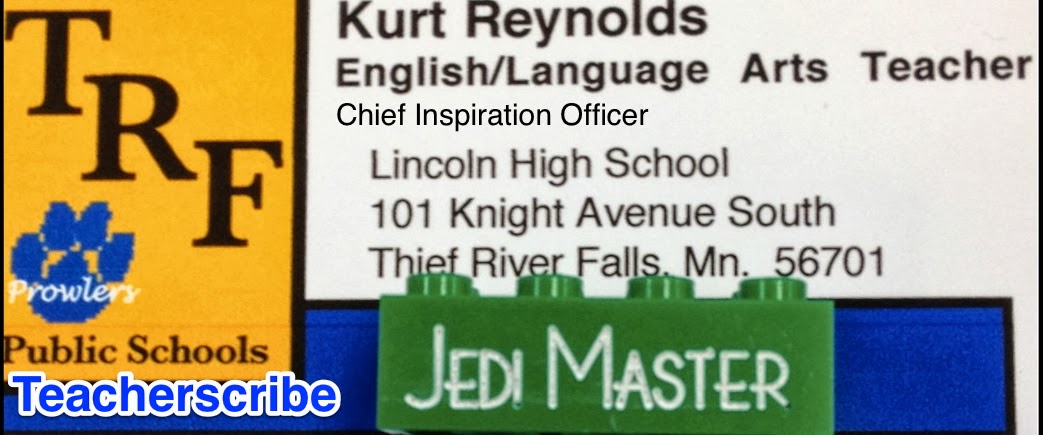Teacherscribe’s
Teaching Tip #31
One book that has had a major impact on my teaching is - oddly - Gary Vaynerchuk’s Jab, Jab, Jab .
. . Right Hook!
I use the adverb “oddly” because
Vaynerchuk’s book is a business book on how to engage your customer
through social media.
For the past few years, though, I’ve been fascinated
by trying to apply business principals (branding, advertising, customer
loyalty, and so on) to teaching.
What I took away form Jab, Jab, Jab . . . was something that has
impacted how I use social media when I teach.
The core thesis of the book is this - companies have two options
when it comes to social media Jabs (where they offer the customer value of some
sort) and Right hooks (where they ask something of the customer).
A “jab” might
be a joke or advice or useful information.
A “right hook” might
be a sale or a promotion.
Here is an example of each - Columbia (the clothing company)
offers a free app called “What Knot to do in Greater Outdoors.” This is an app that can come in
handy. If you’re trying to tie a
knot - say you’re out boating and want to tie a tube up to your boat and
don’t know what type of knot will be sufficient, you can consult
this app and it will walk you through how to tie various knots. That adds value to the customer. It doesn’t demand that you
buy anything from Columbia (remember, the app is free). It adds value.
I follow an author on Twitter - Marc Prensky. He only offers right hooks through social
media. He never offers links to other
useful articles or sites. He just Tweets
links to promos for his books or articles he has published. It says one thing: buy this, read my article,
visit my site, buy my book.
Prensky simply isn’t using social media effectively.
Vaynerchuk says you should have a series of “jabs” (tweets,
Facebook posts, Instagrams, commercials . . .) that offer some sort of value
(again, maybe they’re funny or informative or
particularly helpful in some way shape or form or maybe they give you free
materials) first. THEN you can hit the
customer (or in our case, the student) with a right hook where you ask something
from them (to like you FB page, or visit your website, or join your email list,
or buy your product . . .).
When you do this, you’re much more likely to not only get
the customer to buy from you, but you’re far more likely to build customer
loyalty and develop your brand.
So, you ask, what does any of this have to do with me as a
teacher?
Well, that depends on you.
But here is how I use the philosophy -
On Twitter, Instagram, Pinterest or Facebook (or even via text or
email), I first offer my students some sort of value. It might be a humorous meme, a link to a
video that is relevant to what we are reading or studying in class, maybe it’s
a resource to help them with their papers or their works cited, maybe it’s
a text reminding them when something is due, maybe it’s a comment
thanking them or praising them or recognizing them for something in class or
something I saw in the commons. This is
all done with the intention of building value and culture.
Then - when I have have to - I hit them with a right hook - that
is I send out an assignment via social media or I ask them to fill out a survey
or complete a Padlet or visit the class blog to leave feedback.
I see too many teachers only use websites, blogs, or social media
for right hooks exclusively. And they
don’t get the type of student engagement nor do they cement the
type of culture in their classes that they could if they used jabs first to
offer value to their students.
Value? You say. They’re
my students! The subject is the
value. Why should I have to do anything
extra?
Valid point. But you’re
going to be less and less relevant to your students. These are the last of the millennias and Gen
Z. They see and experience the world
differently than we did when we were their ages.
So if you’re looking to be ineffective, by all means
keep doing it the old way and rely on your scripted curriculum.
Good luck with that.


No comments:
Post a Comment